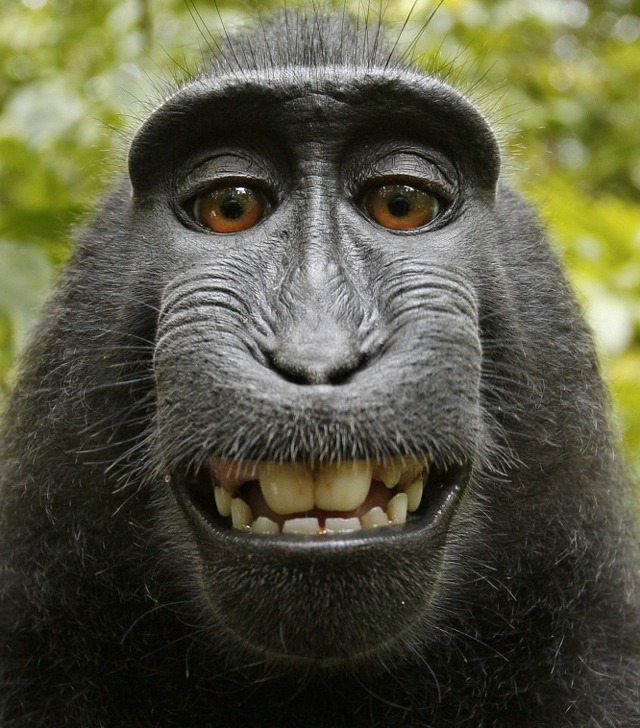From the above clip of British wildlife photographer David J Slater, it is clear that Slater is strongly considering taking legal action against Wikimedia for copyright infringement in the now infamous “monkey selfie” photographs.
In the clip, Slater explains how the photographs came about by saying:
After a three day exploration of a forest in North Sulawesi, Indonesia, the monkeys followed me around, I followed them around, they got too used to me, eventually they started grooming me, touching me – it was an amazing experience. I still wanted that one shot, that one shot full in the face, just for my self satisfaction and to give it to an agent and therefore I could promote the conservation issue. But it wasnt going to happen not unless they took the photograph themselves. And I did that by setting it up on a tripod with a cable release, walking a few metres away, allow them to come in watch their own reflections, play with the camera, play with the cable release and bingo, they took their own shot.
Wikimedia, the US-based organisation behind Wikipedia, has refused Slater’s repeated requests to remove one of the monkey selfie photographs which is used online without Slater’s permission, claiming that because the monkey pressed the shutter button no one owns the copyright. Wikimedia is reported as saying:
We take these requests very seriously, and we thoroughly researched both sides of the claim (….) When a work’s copyright cannot vest in a human, it falls into the public domain. We believe that to be the case here.

If Slater decides to take legal action against Wikimedia, he has the option of suing under the copyright laws of the United States, United Kingdom or Indonesia. The central issue for determination would be whether Slater can claim authorship and/or ownership of the monkey selfies? A quick perusal of US Copyright law appears to automatically rule out any copyright claim by a non-human author. According to the rules published by the US Copyright Office:
503.03 Works not capable of supporting a copyright claim.
Claims to copyright in the following works cannot be registered in the Copyright Office:
503.03(a) Works-not originated by a human author.
In order to be entitled to copyright registration, a work must be the product of human authorship. Works produced by mechanical processes or random selection without any contribution by a human author are not registrable.
Under both United Kingdom and Indonesian copyright laws, the definition of an author refers solely to “a person” therefore non-human authorship is not possible. In the Kenyan context, this blogger has discussed the question of non-human copyright authorship here and here.
Nonetheless, as an amateur photographer (see here), this blogger appreciates the enormous amount of time, skill and effort expended by Slater which resulted in the monkey selfie photographs. Therefore, this blogger argues that, by affording some copyright protection to Slater, the courts would be greatly incentivising him and other photographers to carry on the arduous task of photography.
One possible middle-ground solution which ensures that Slater is incentivised for his undeniable role in the monkey selfie photographs is joint authorship. According to the US Copyright Act 17 U.S.C. § 201(a): “Copyright in a work protected under this title vests initially in the author or authors of the work. The authors of a joint work are co[o]wners of copyright in the work.” Further, Section 101 provides that “[a] ‘joint work’ is a work prepared by two or more authors with the intention that their contributions be merged into inseparable or interdependent parts of a unitary whole”.
Therefore, in the present case, the court could find that the monkey selfies were works of joint authorship between the macaque monkey and Slater. This would then allow Slater to exercise economic rights over the works of joint authorship between human and non-human authors.